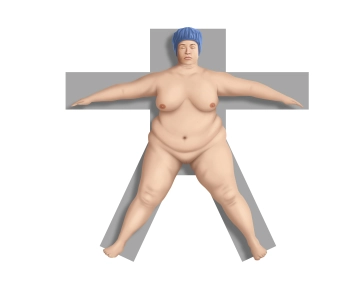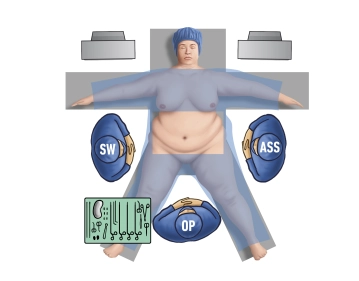As with all other approaches in the treatment of obesity, surgical measures do not address the root cause, as the actual cause of obesity is complex and still largely unknown. Based on the guidelines in developed countries, surgery is indicated in the following patients:
BMI ≥ 40 kg/m², nonsurgical treatment (diet, exercise, behavioral and drug-based therapies, alone or in combination) was found to have been unsuccessful.
BMI ≥ 35 kg/m² with one or more obesity-associated comorbidities such as T2DM; coronary artery disease; heart failure; hyperlipidemia; arterial hypertension; nephropathy; obstructive sleep apnea syndrome; obesity hypoventilation syndrome; Pickwick syndrome; nonalcoholic fatty liver or nonalcoholic fatty liver hepatitis; gastroesophageal reflux disease; asthma; chronic venous insufficiency; urinary incontinence; immobilizing joint disease; fertility limitations; or polycystic ovary syndrome.
Primary indication without previous attempt at nonsurgical treatment:
- BMI ≥ 50 kg/m²
- A nonsurgical treatment attempt is deemed unpromising or futile by the multispecialty team.
- In patients with particularly severe concomitant and secondary diseases that do not allow postponement of surgery.
Primary indication for metabolic surgery is possible in the presence of BMI ≥ 40 kg/m² and coexisting T2DM, if the treatment goal is more to improve the glycemic metabolic state rather than to achieve weight loss. These patients do not require evidence of exhaustive nonsurgical treatment to establish the indication for bariatric surgery [American Diabetes Association 2017].
The following parameters must be considered when choosing the procedure:
- Patient baseline weight (BMI)
- Expected weight loss (EWL)
- Compliance
- Age
- Family planning not yet completed in women
- Comorbidities (particularly diabetes)
- Surgical risk
Other factors to consider include:
- Gender
- Profession
- Eating habits
There is no single surgical procedure that can be recommended for all patients in general; rather, the choice of procedure should be tailored to the patient's personal medical, psychosocial, and general circumstances.
In patients with extreme obesity (BMI > 50 kg/m²) and/or significant comorbidity, a staged approach may be considered, e.g., sleeve gastrectomy first, followed by gastric bypass, to reduce the perioperative risk. Ideally, all procedures should be performed laparoscopically.
Sleeve gastrectomy (SG):
SG was initially introduced in biliopancreatic diversion with duodenal switch (BPD/DS) for additional transit restriction and ulcer prophylaxis. By now it has become established as a stand-alone surgical procedure. SG can easily be converted to gastric bypass if necessary.
The excess weight loss two years after SG does not differ significantly from weight loss after pRYGB (proximal gastric bypass). However, in terms of long-term weight management, reflux management and diabetes remission it proved to be inferior to RYGB. But SG was associated with significantly fewer perioperative complications.
Due to its low morbidity compared to the other procedures, SG is recommended in these cases:
- Old age
- Very young age because of the lower risk of malabsorption
- Very high BMI range due to the many options if conversion surgery becomes necessary
- Procedure of choice in diseases requiring endoscopic access: Gastritis type A, access to the papilla, e.g., in bile duct stenosis.
- Crohn disease
- Need to take medication with level monitoring


